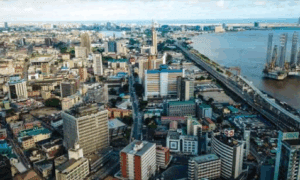PhotoGov is an online platform powered by a proprietary neural-network architecture that generates perfectly formatted photos for passports, visas, and ID documents. The service already supports more than 1,000 document types from 120 countries and has processed 1.8 million images with a 99 percent acceptance rate from government agencies.
In this interview, Vitaly Yagodkin—a technology visionary and product-growth architect who turns complex bureaucratic hurdles into a two-click flow—explains how his team is building a global “photo-as-a-service” infrastructure and why PhotoGov’s neural engine is raising the industry bar for accuracy and convenience.
“Tech should breathe with people, not force them to learn new rituals,” Yagodkin tells Tech Newswire from the company’s Dubai outpost. “Our job is to erase the friction you don’t even notice until it’s gone.”
Short story:
Founder and CEO of the venture studio Rave Technology.
Creator of PhotoGov and VisaDay, an instant e-Visa processing service.
Global fintech product for cross-boarder payments to freelancers in the works.
Base offices – London and Dubai; R&D center – distributed team worldwide.
Under the Hood: Eleven Models, One Click
Most online “photo tools” rely on a crop macro and hope for the best. PhotoGov is different. The service runs an 11-model ensemble—segmentation, landmark detection, background resynthesis, lighting correction, GPU-level alignment, the works. The network retrains monthly on fresh specs from ICAO, the U.S. State Department, the EU’s eIDAS framework and a pile of regional ministries.
“When a country moves a chin line by two millimeters, we know within hours,” Yagodkin says. Regression tests then hammer the new build with 2,700 edge-case images before a single user sees the update.
Russian Proof, Global Ambition
PhotoGov is hardly Yagodkin’s first rodeo. He cut his teeth in Russia, shipping a string of profitable SaaS products before spinning the most promising ideas into Rave Technology, a London-registered venture studio.
The studio’s portfolio already includes VisaDay, a one-click e-visa service. Next up: a cross-border fintech layer designed to pay freelancers in “problem” jurisdictions in three taps. London provides regulatory cover; Dubai gives the team execution speed. The R&D headcount is fully distributed.
Privacy First, Paperwork Second
PhotoGov’s files live for 15 minutes—encrypted in transit with TLS 1.3, stored with AES-256, auto-deleted on schedule. Logs are salt-hashed; ISO 27701 certification is underway. “We treat every photo like a boarding pass,” Yagodkin says. “Use it once, toss it.”
The Metrics That Matter
| Metric | Stat |
| Images processed | 1.8 million |
| Monthly active users (QoQ) | +12 percent (organic) |
| Acceptance rate | > 99 percent (CI lower bound = 98.7 %) |
Upcoming roadmap:
- live preview directly in the browser
- Support for 40 additional document formats
- API hooks for pilot government portals
- Offline capture apps for iOS and Android
Try It—Then Judge
Skeptical? Yagodkin suggests uploading any selfie, grabbing the free preview, and running it through your consulate’s validator.
“Compliance is math, not marketing,” he says. “If the file passes every official check, does it matter where the camera was?”
In an industry that still asks travelers to stand against white drywall under fluorescent lights, that question may already be answered.
Have a tip or want to see PhotoGov’s tech stack in action? Email the author at [your-email] or ping @TechNewswire on X.
Read More From Techbullion



































